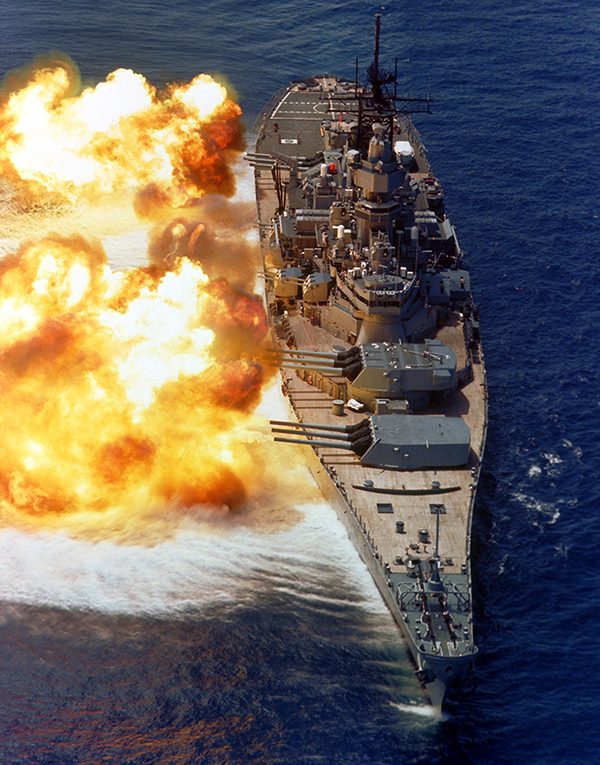Wartime Torpedo Incident Near Bermuda Recalled
A near-catastrophic World War Two torpedo mishap off Bermuda which could have cost US President Franklin Roosevelt his life is being highlighted at the website of a leading US international affairs magazine.
In a recently posted National Interest article contributor Sebastien Roblin, who writes on security and military history matters, discusses the destroyer USS William D. Porter — dubbed “the unluckiest ship in the navy” — firing a live torpedo at the battleship carrying the American president in 1943.
One of the largest and most heavily armed battleships ever to see service in the US Navy, the 887-foot USS Iowa was carrying President Roosevelt, US Secretary of State Cordell Hull and other top officials across the Atlantic to Algeria on the first leg of a trip to Tehran for a wartime summit with Allied leaders Winston Churchill and Joseph Stalin.
The William D. Porter was one of the escort ships, guarding the Iowa from torpedo attacks by any lurking German U-boats which came across the military taskforce on its transatlantic voyage.
But on November 14, during a drill near Bermuda in which the William D. Porter fired unarmed torpedoes at the Iowa in mock attacks on the battleship, the exercise almost turned tragic.
A William D. Porter sailor forgot to remove the primer from one torpedo and it was fired towards the Iowa.
Commissioned during World War Two, the battleship USS Iowa is seen here firing its 16-inch guns in 1984
“Torpedoes were tricky to land on target and often unreliable—but just one or two lucky hits sometimes sank even huge battleships and carriers,” said Mr. Roblin.
The potentially calamitous news was conveyed to the Iowa by signal lamp as the torpedo closed the 6,000 yard distance between the two ships.
“Iowa turned hard to port and accelerated to flank speed,” said Mr. Roblin. “Though the 825 pounds of HBX explosive in the torpedo might leave the Iowa at the bottom of the sea in a few minutes given a lucky hit, Roosevelt instructed the Secret Servicemen pushing his wheelchair to position him with a view. [He] wanted to see the action.
“… Finally at 2:40, the torpedo struck the Iowa’s wake and detonated a safe distance away.”
The William D. Porter was immediately ordered to Bermuda where a US Navy inquiry was convened. Chief Torpedoman Lawton Dawson, whose failure to remove the torpedo’s primer had enabled it to be fired at the Iowa, was initially sentenced to hard labor. President Roosevelt later intervened in his case, and, because the incident had been accidental, waived the sentence.
The William D. Porter was later sunk in a Japanese kamikaze attack in the Pacific on June 10, 1945.
You can read Mr. Hamlin’s full National Interest article here.
Read More About
Category: All


